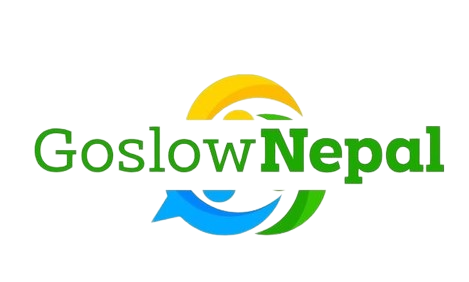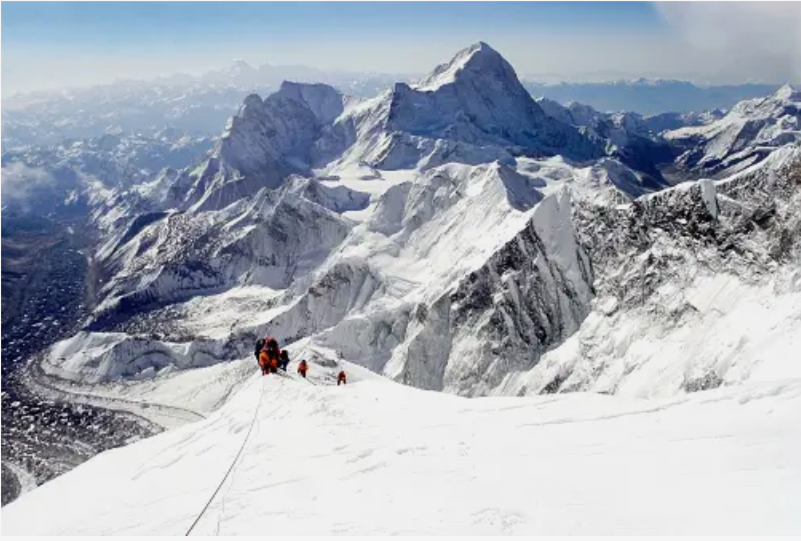Trip Info
Overview
Being highest peak in the world with an altitude of 8,849m Mount Everest beautifullyand proudly stands between Nepal and Tibet border and in Solukhumbu district of Nepal. The Sanskrit name for Mount Everest is Sagarmatha which means “peak of heaven” justifying the name it gives us thevibes of heaven itself. It is believed in history that, In July 20, 1919 Sir Edmund Percival Hillary whowaswith with Sherpa mountaineer Tenzing Norgay, they were the first persons to have reach the summit of Mount Everest . Apart from being amazingly beautiful Mount Everest or base camp may have somedisadvantages like suffering from altitude sickness. It is most likely to have breathing difficulties whenyou are in such heights. Many accidents has been reported on Everest base camps and Mount Everest peak itself. That is why you need to be more careful when you decide to trek to EBC.
Temperature and weather in Everest base camp
Mount Everest is certainly the highest peak in earth. You must expect the temperature likewise. Temperature in Everest base camp (EBC) can be extremely cold. Generally at the altitude of 5,200mwhich is definitely above the sea level has characterized climate called mountain plateau climate whichis coldest throughout all the months. The coldest months in EBC are November-February where thetemperature reaches -17 degree Celsius. July and august being rainy seasons they are comparativelywarmer. Spring in EBC i.e. (April – May) generally have the day time temperature around 15 degreeCelsius where at night it can fall to -1 degree Celsius. With this bearable temperature spring seasonis definitely a best time to visit EBC providing clear and blue skies, and view of summit.
During monsoon season (June to September) the temperature is good. At day time reaching up to22degree Celsius and at night falling around 4 degree Celsius this season seems to have warmer climate. But due to heavy rainfall the roads might be muddy and may cause some trouble to trekkers. In autumnthe day time temperature reaches to 17 degree Celsius and falls around -8 degree Celsius at night.
Well, winter is cold everywhere. In EBC, being the coldest season the temperature in winter (November to April) can be around -5 degree Celsius at day time whereas, it greatly falls to -10 to -15 degree Celsiusat night. However if you really like cold, you can still visit EBC in early winter. In fact, you will get amazing view of clear blue skies and bright sunshine.
Best time to visit EBC
Even though EBC welcomes everyone almost all the months, still the best time to visit EBC is April toMay, and September to October. In this time the temperature is moderate with slight rainfall. Youget all the chance to see the dazzling view of mountains, clear blues skies and snows. However, if you areonlimited budget the best time for you is early winter. You can actually get cheaper accommodationandfood in early winter.
Note: It is almost impossible to trek on mid and late winter due to extreme cold and snowfall andhigher chances of avalanches.
Duration to reach Everest Base camp
– There are several routes to go Everest base camp.
- Route from Jiri to Everest base camp– This route basically takes around 19- 21 days. Sincemost people these days like slow traveling. This route is best for them and offers a beautiful viewwithless crowd of hikers. You can witness wonderful insights of Solu Sherpa culture. This trip maycost around 1300-1500 per day.
- Route from Tumlingtar– This route take good 21-23 days which starts in Tumlingtar itself. Youcan drive or catch a flight to Tumlingtar. Like from Jiri this route is also not really crowdedwithhikers and you can enjoy the quieter journey.
- The classic route– You can take a flight to Lukla this is the most direct and fastest route toEverest base camp. It basically starts from Lukla valley through small villages, beautiful farmlands before you reach to Namche. After that you will follow the course of Imja Khola River up to the Sherpa village of Dingboche. After walking for few more days you will reach toKalapattar Mountain which looks down over EBC. This way you can reach EBC easily andinveryshort time. This standard route journey to EBC may cost total 35000- 40000 including all theaccommodations and food.
Transportation-
Bus– Bus is the suitable and moderately easier way to reach EBC, especially to those who have acrophobia. They can always travel by bus or jeep to Phaplu and then trek to Lukla. It usually takes 10- 12 hours of bus/jeep journey to reach Phaplu from Kathmandu. During dry seasons the bus reaches upto khari khola whereas in summer seasons the bus only reaches up to Phaplu because of rainy effects.
Trains– Since there are no trains available in Nepal this option is for people coming through northernside Tibet. There is a train facility up to Lhasa. From Lhasa there is an easiest road way to northernEBC. This makes the journey easier and comfortable.
Airplane- The two airports here are Kathmandu and Lukla so you cannot directly fly fromKathmandutoEBC. But you can reach to Lukla airport. From Lukla you need to start tour trek to EBC.
Helicopter– Helicopter allows you to visit and return to Kathmandu in a very short time. It takes 4hoursto fly from Kathmandu to Lukla. From Lukla it takes 40-45 minutes to reach the base camp or Kalapathar. You can reach 17,700 feet (5,400m) by helicopter and enjoy views from your window seat. However theprice is very expensive around 150$ for one way. But this may differ depending on the size of group.
Cost of accommodation and food
Accommodations– Accommodations are not so bad in EBC. In fact you can get friendly environment staying on the teahouses, made and run by Sherpa. They are basically small lodges with small rooms.
Teahouses– Here, Rooms are usually provided with two single beds and small table. They also provideaclean mattress, bed sheet and pillow with a warm blanket. You can also use your sleeping bag for additional warmth. They have one common dining room to eat and also to socialize with other trekkers. Staying in teahouses or lodges may cost up to 5- 10$ (500 -1000 NRS) per night. Teahouses have proper facilities of bathroom, hot shower and internet access.
Food – food in EBC can be a little expensive as the altitude rises.
Meal (dal, Bhat, curry)- 400-700 NRS (4-7$)
Hot soups- 300-500 NRS (3-5$)
Snacks- pasta, noodles, potatoes= 400-600 NRS (4-6$)
Pizzas – 700-900 (7-9$)
Veg momos are around -400- 500 NRS (4-5$)
Teas- 100 NRS per cup (1$)
Permits and fees
Khumbu Pasang Lhamu rural municipality entrance permit- this permits cost you around 2000. This wasappointed on 1st October 2018 replacing the old TIMS cards,
Sagarmatha national park entry permit– It’s around 3000 NPR for every foreigners beside Indians whichis 1500 NPR. Here, two passport size photographs and copy of Khumbu Pasang Lhamu rural entranceismandatory for further processing. They can be available at Nepal tourism board office. This is oneof theimportant permits you need to save for further way.
Additional permit for Jiri to base camp– If you are travelling through this route of Jiri you need toget extra permit of Gaurishankar conservation area. The permit is either available on Nepal tourismboardwith cost of 2000 or at Shivalaya checkpoint which will cost you 4000. However there is always discount for Indian citizens.
Communications and electronic
Nepal has been improving these days on terms of internets. Yes there is internet or Wi-Fi in EBCtoo. Although it’s available only on few areas it works pretty nicely. However radios are still the primary means of communication there. Fortunately there is good network coverage in EBC and we can communicate and use data as we wish.
Safety security fitness–
Honestly, Trekking to EBC is quite challenging and adventurous. You need to prepare yourself for hikeof 5-6 hours per day. You can start your exercise 8-12 weeks prior to the journey. You have to strengthen your muscles, knees and legs for the trekking. It’s not mandatory for you to be 100%fit andhealthy. If you are mild to moderate sick you can still travel with your physician’s permission. But if youare severely sick it’s better to take rest and postpone your plan. Throughout the journey you needtostay hydrated and continuously check your oxygen level.
It’s likely to suffer altitude sickness when you start climbing higher. The primary cause of altitude sickness is decrease in amount of oxygen in atmosphere. It’s important to carry a handheld oximetry. Oxygen saturation below 75% may be risk. The most common medication for altitude sickness is Diamox(Acetazolamide).
Other requirements
Insurance– Travel insurance is more of a mandatory thing to do before traveling anywhere. Donot forget to mention the maximum altitude you will be reaching because insurance varies and depends upon the height or elevation. You can always get more idea about travel insurance fromtravel agenciesor insurance company itself. You can also get one in any travel agencies.
Visa and passports– For all the foreigners beside Indian, you will be needing a valid visa and validpassport to visit anywhere in Nepal. You can have your Nepalese visa at Tribhuwan international airport in Kathmandu. You will also need two passport sized photographs for trekking permits.
Highlights
- Scenic Flight to Lukla
- Namche Bazaar Exploration
- Tengboche Monastery Views
- Immerse in Sherpa Culture
- Bonding with Fellow Trekkers

